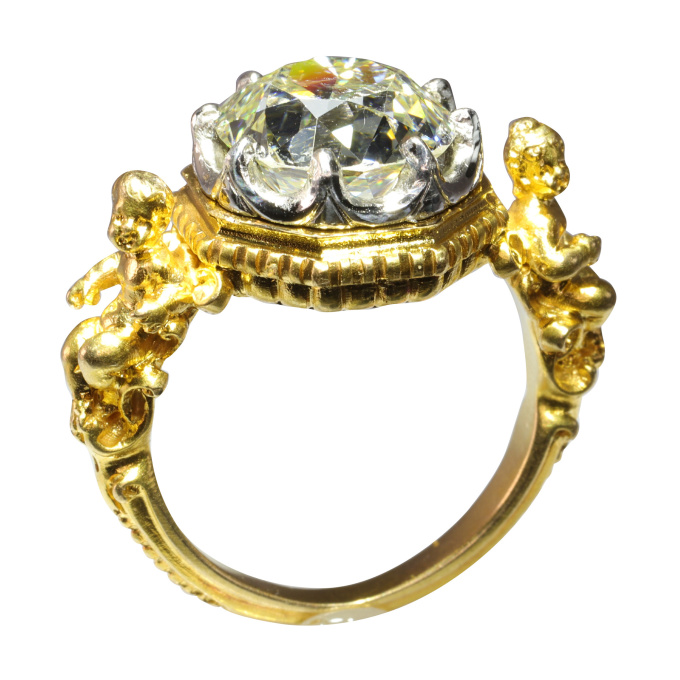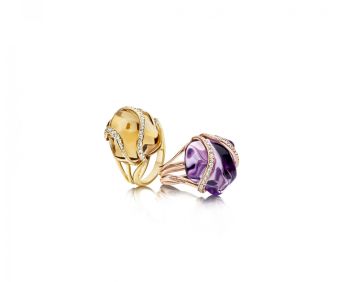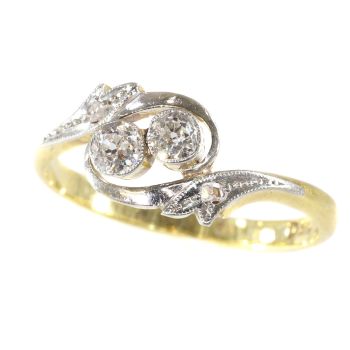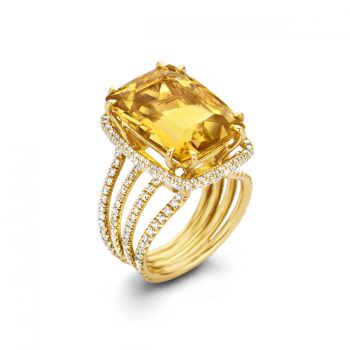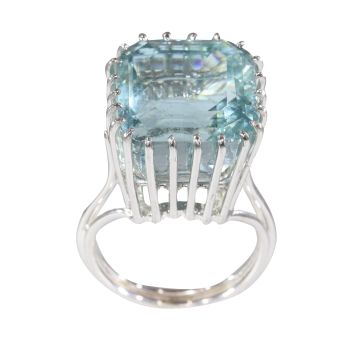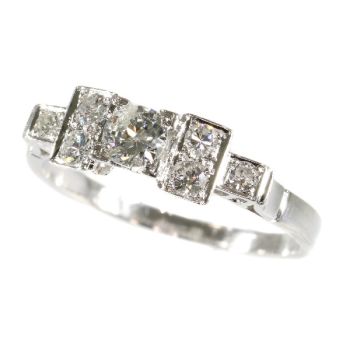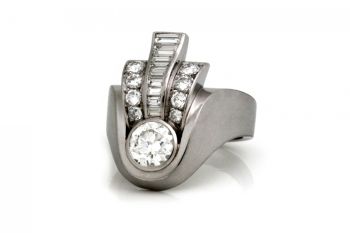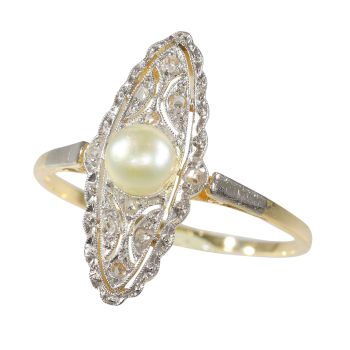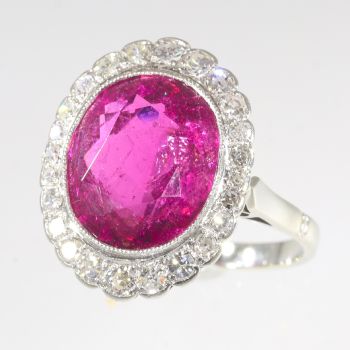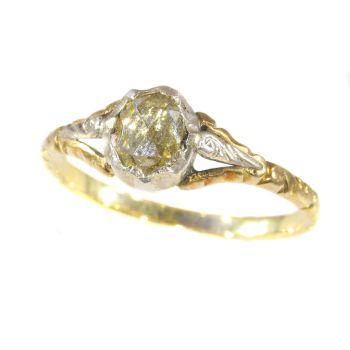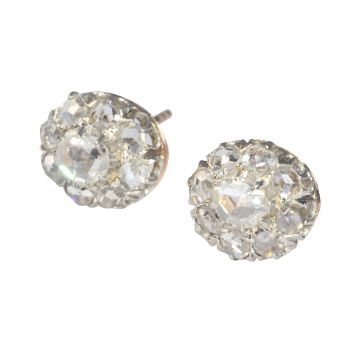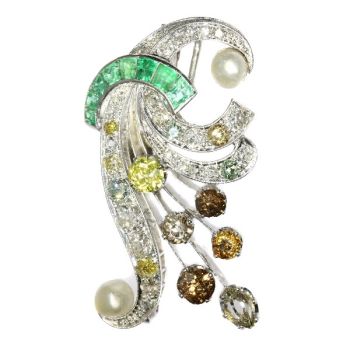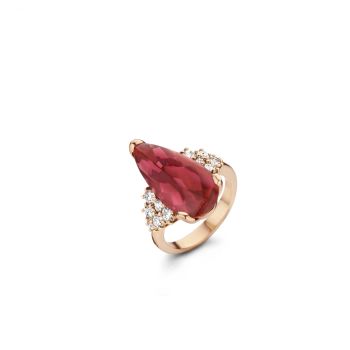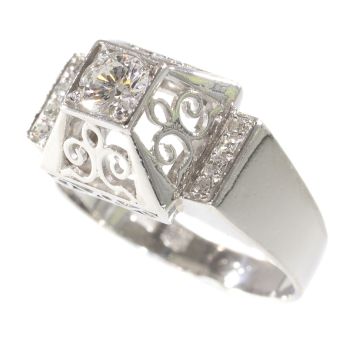Wièse's 4.86ct Diamond Ring, a Neo-Renaissance Legacy 1900
Wièse
Adin Fine Antique Jewellery
- Sur l'oeuvre d'art
This Late-Victorian Neo-Renaissance ring by Jules Wièse is a museum-quality marvel in Haute Joaillerie. Crafted in France from 18K yellow gold and platinum, the ring incorporates two putti, symbolic of love and innocence, adding layers of historical andemotional meaning. At its core lies a 4.86-carat old European cut diamond. Wièse's craftsmanship is renowned, even cited in multiple academic books on 19th-century jewellery. Authenticated by Wièse's signature and French hallmarks, this ring is apinnacle of craftsmanship and a timeless heirloom, captivating collectors and destined for future generations to be amazed by its uniqueness.
Antique jewelry object group
ring
Condition
excellent condition
more info on our condition scale
Country of origin
France
Style
Victorian / Neo Renaissance
more info on styles
Style specifics
Neo-Renaissance jewellery refers to pieces inspired by the art and culture of the Renaissance period, which spanned from the 14th to the 17th centuries. Created primarily in the late 19th and early 20thcenturies, Neo-Renaissance jewellery aimed to replicate the grandeur and intricacy of its historical predecessor. Artisans of this movement often utilised traditional materials like gold, enamels, and precious gemstones, meticulously crafting them into elaborate designs that featured a variety of motifs, such as mythological scenes, putti, and intricate floral patterns.
The Neo-Renaissance movement was largely a European phenomenon, with France being a key player in its development. Renowned jewellers like Jules Wièse elevated the craft to new heights, creating pieces that were not mere replicas but original works of art that incorporated Renaissance elements. These jewellery pieces were considered the epitome of luxury and sophistication, valued not just for their materials but also for their exquisite craftsmanship and detailed ornamentation. They are now highly sought after by collectors and can be seen as timeless heirlooms, capable of captivating future generations with their unique blend of history and artistry.
Period
ca. 1900
Events & facts of this era, poetry of this era, fashion of this era.
Source of inspiration
Renaissance
Theme
two putti, one male, one female
The use of two putti—one male, one female—could symbolise romantic or divine love, a union of opposites, or the harmony and balance achieved through such a union.
Material
18K yellow gold and platinum (touchstone tested)
more info on precious metals
Extra information
Louis Wièse was the son of famed 19th-century French jeweller Jules Wièse and continued his father's legacy of exceptional craftsmanship. Like his father, Louis excelled in creating intricate designs inspired by historical and religious themes. His work, often executed in gold and featuring detailed ornamentation, represents some of the finest examples of 19th-century French jewellery. Louis Wièse contributed to maintaining thefamily's esteemed reputation, with pieces today equally coveted by collectors and displayed in significant museums globally.
Diamonds
One old European cut diamond with an estimated weight of ± 4.86ct colour and clarity L, si1 (see pictures for HRD certificat)
Birthstones
Diamond is the birthstone (or month stone) for April.
more info on birthstones
Brand
Wièse
Signature
Wièse (see pictures)
Hallmarks
Wièse mastermark and the French control mark for 18K gold representing an eagle's head that was in use in France from about 1838. (see pictures for close ups)
more info on hallmarks
Dimensions
width top of ring 1,37 cm (0,54 inch)
see picture with a ruler in millimeters and inches
Weight
10,70 gram (6,88 dwt)
Ring size 52
more info on ring sizes
Adin Reference Nº
20027-0039
Copyright photography
Adin, fine antique jewellery
Sources
- Le Bijouterie Francaise au XIX Siècle par Henri Vever (volume 2 page 213 for similar ring)
- Henri Vever French Jewelry of the Nineteenth Century (page 1013)
- Jules Wièse und sien Atelier (similar rings in the book)
- Pariser Schmuck (page 49 for a ring in the same idea & page 44 for the Wièse mark)
- Dictionnaire des joailliers, bijoutiers et orfèvres en France de 1850 à nos jours By: L'École des Art Joailliers avec le soutien de Van Cleef & Arpels.
Additional information
our latest acquisitions
jewelry glossary
wall of fame
visit us in Antwerp
subscribe to our mailinglist
- Sur l'artiste
Dans la seconde moitié du XIXe siècle, les orfèvres ont commencé à s’inspirer de plus en plus des époques révolues, en adoptant des objets anciens et médiévaux tout en faisant revivre des techniques oubliées depuis longtemps. En France, les styles néo-gothique et néo-Renaissance ont gagné en popularité, se regroupant dans ce qui est devenu connu sous le nom de « style cathédrale ».
L'une des sommités de ce mouvement de design était Jules Wièse (1818-1890). Il fait le voyage de Berlin à Paris en 1839, entamant une carrière dans le célèbre atelier du joaillier et orfèvre Froment-Meurice. Cet artisan entreprenant gravit rapidement les échelons et accède au poste de chef d'atelier en 1844. L'année suivante, il prend l'audace d'ouvrir son propre atelier au 7 rue Jean-Pain-Mollet. Wièse s'est rapidement taillé une niche distincte, se spécialisant dans la création de bijoux et d'objets d'art finement ciselés en argent et en or.
Son savoir-faire exceptionnel n’est pas passé inaperçu. Wièse reçut des distinctions à l'Exposition Industrielle de 1849 et, en 1855, il reçut une médaille de première classe à l'Exposition Universelle. Un critique, commentant son travail lors de l'exposition de 1855, a noté : « l'importance de ses pièces et ses expériences audacieuses révèlent une appréciation de l'art et de la beauté qui mérite d'être reconnue par le jury, même dans l'œuvre la plus modeste ». Le talent et l'originalité remarquables de Wièse lui valent rapidement une renommée internationale lorsqu'il reçoit une médaille de distinction à la Grande Exposition de Londres de 1862.
Le travail de Wièse était une fusion harmonieuse de motifs médiévaux et de méthodes artisanales traditionnelles. Il s'est inspiré de la légende arthurienne, des contes chevaleresques, de l'architecture gothique et de diverses formes d'art de l'époque. Ses bijoux portaient souvent une finition à l'oxyde de mercure soigneusement appliquée, leur conférant un aspect antique et noirci. Dans le cas des objets en or, on utilisait parfois du rouge de bijoutier pour leur donner l'aspect de trésors fraîchement déterrés.
En 1880, Jules Wièse prend sa retraite et passe les rênes de l'atelier à son fils Louis. Décrit par Vever comme « un artiste exceptionnellement modeste et vraiment talentueux », Louis a continué à produire des bijoux dans le style revivaliste jusqu'à la fermeture de l'entreprise en 1923.
Les bijoux de Wièse, connus pour leur charmante excentricité et leur savoir-faire exquis, restent très convoités et recherchés par les collectionneurs et les connaisseurs. Des exemples de son travail peuvent être trouvés dans des institutions réputées telles que le British Museum, le Victoria & Albert Museum et le Musée des Arts Décoratifs de Paris.
Êtes-vous intéressé par l'achat de cette oeuvre?
Artwork details
Related artworks
- 1 - 4 / 24
- 1 - 4 / 24
- 1 - 4 / 24
- 1 - 4 / 12


